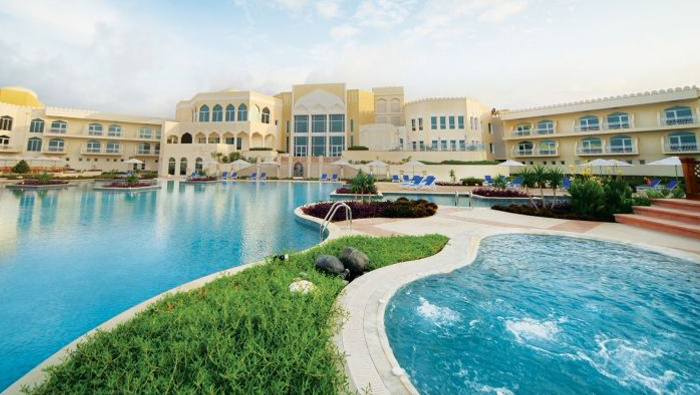
Muscat: Oman’s economy is expected to remain vibrant and maintain the growth path owing to various factors such as government’s continued focus on diversification, controlled inflation and the supportive demographic profile.
In the current macro-economic situation with low crude oil prices, the government and the Central Bank of Oman (CBO) have been making efforts to avoid any slowdown in the growth of the economy.
Although the Sultanate witnessed an overall contraction in nominal growth domestic product (GDP) by 14.2 per cent from January to September 2015 due to the decline in the petroleum sector, the non-oil sector registered a growth of 4.7 per cent mainly due to services sector notably under transport and communication, hotels and restaurants and real estate services.
Industrial sectors such as construction, electricity and water supply and mining and quarrying also registered growth. Oman’s fiscal balance also turned from surplus to deficit during the period as a result of the drop in crude prices.
Inflation continued its downward trend with the annual average CPI for the Sultanate at 0.20 per cent in January 2016 as against the corresponding period in 2015. On the external front, the current account balance for the first three quarters in 2015 recorded a deficit. However, monetary aggregates in Oman continued its growth pattern despite the decline in crude prices.
However, the pace of growth in banking aggregates is expected to show some decline. The total assets of conventional commercial banks increased by 10.7 per cent to OMR28.1 billion in January 2016 from OMR25.3 billion a year ago. Of the total assets, credit disbursement accounted for 65.7 per cent and increased by 8.8 per cent as at end January 2016 to OMR18.4 billion.
Credit to the private sector increased by 10.7 per cent to touch OMR16.3 billion as at the end of January 2016. Of the total credit to the private sector, the share of the non-financial corporate sector stood at 46.3 per cent, closely followed by the household sector (mainly under personal loans) at 45.6 per cent, financial corporations at 5.7 per cent and other sectors the remaining 2.4 per cent.
Commercial banks’ overall investments in securities stood at OMR2.9 billion as at the end of January 2016 from OMR3 billion a year ago. Investment in Government Development Bonds (GDB) increased by 47 per cent over the year to OMR830.6 million at the end of January 2016. Banks also invested OMR541.3 million in government treasury bills as at the end of January 2016.
Commercial banks’ investments in foreign securities stood at OMR744.6 million in January 2016, registering an increase of 1 per cent over the year. Aggregate deposits held with conventional banks registered an increase of 2.2 per cent to OMR17.8 billion in January 2016 from OMR17.4 billion a year ago.
Government deposits with conventional banks marginally declined by 6 per cent to RO4.7 billion. Deposits of public enterprises increased 1.8 per cent to OMR0.9 billion during the same period.
Private sector deposits, which constituted 67 per cent of total deposits with conventional banks, increased by 5.6 per cent to OMR11.9 billion in January 2016 from OMR11.3 billion a year ago.
Sector-wise, the share of households was 49.4 per cent of the total private sector deposit base, followed by non-financial corporations at 28.7 per cent, financial corporations at 18.8 per cent and other sectors at 3.1 per cent.
Islamic banking entities provided financing to the extent of OMR1.82 billion as at the end of January 2016 when compared to OMR1.1 billion a year ago. Total deposits held with Islamic banks and windows also registered a significant increase to OMR1.54 billion in January 2016 from OMR0.7 billion outstanding as at the end of January 2015.
Total assets of Islamic banks and windows combined, amounted to OMR2.3 billion as at the end of January 2016, which constituted about 7.6 per cent of the banking system assets.
The combined balance sheet of conventional and Islamic banks taken together, provides a complete overview of the financial intermediation taking place in the banking system in Oman. The total outstanding credit extended by the other depository corporations stood at OMR20.3 billion as at the end of January 2016, a rise of 12.2 per cent over the level witnessed a year ago.
Total deposits also registered a significant growth of 6.8 per cent to OMR19.4 billion as at the end of January 2016.